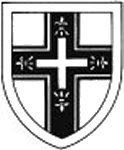
Hermann Hoth was a German army commander, war criminal, and author. He served as a high-ranking panzer commander in the Wehrmacht during World War II, playing a prominent role in the Battle of France and on the Eastern Front. Contemporaries and later historians consider Hoth one of the most talented armoured warfare commanders of the war. He was a strong believer in Nazism, and units under his command committed several war crimes including the murder of prisoners of war and civilians.

Army Group North was the name of three separate army groups of the Wehrmacht during World War II. Its rear area operations were organized by the Army Group North Rear Area.

The 13th Panzer Division was a unit of the German Army during World War II, established in 1940.

The 6th Panzer Division was an armoured division in the German Army, the Heer, during World War II, established in October 1939.

The 51st Army was a field army of the Red Army that saw action against the Germans in World War II on both the southern and northern sectors of the front. The army participated in the Battle of the Kerch Peninsula between December 1941 and January 1942; it was destroyed in May 1942 with other Soviet forces when the Wehrmacht launched an operation to dislodge them from the peninsula. The army fought in the Battle of Stalingrad during the winter of 1942–43, helping to defeat German relief attempts. From late 1944 to the end of the war, the army fought in the final cutting-off of German forces in the Courland area next to the Baltic. Inactivated in 1945, the army was activated again in 1977 to secure Sakhalin and the Kuril Islands. Following the dissolution of the Soviet Union, the army continued in existence as a component of the Russian Ground Forces. The army was active during two periods from 1941 until 1997.
A Flak Corps was a massed anti-aircraft (AA) artillery formation employed by the Luftwaffe for anti-aircraft, antitank, and fire support operations in World War II. A Flakkorps was a flexible organization that was made up of a varying number of AA regiments, brigades, or divisions. A total of six flak corps were organized by Germany during the war. The flak corps, while mainly intended to support ground units with concentrated anti-aircraft fire, in many cases provided also antitank support.
The Axis order of battle at Stalingrad is a list of the significant land units that fought in the Battle of Stalingrad on the side of the Axis Powers between September 1942 and February 1943.
Walter Scheller was a general in the Wehrmacht of Nazi Germany during World War II, who commanded several divisions. He was a recipient of the Knight's Cross of the Iron Cross. Scheller was killed at Brest-Litovsk on 21 July 1944, during the Lublin–Brest Offensive.
Wolfgang Pickert was a general in the Luftwaffe of Nazi Germany during World War II who commanded the III Flak Corps. He was a recipient of the Knight's Cross of the Iron Cross with Oak Leaves.

The XXVI Army Corps was a Wehrmacht army corps during World War II. It existed from 1939 to 1945. It was also known as Corps Wodrig during the Invasion of Poland.
The 1st Flak Division was a Flak division of the German Luftwaffe in World War II. Its primary and most noteworthy function throughout the war was the defense of the air space of the city of Berlin.
The 2nd Flak Division was a Flak division of the Luftwaffe of Nazi Germany during World War II. It was initially deployed as a stationary formation in Leipzig for the defense of the German homeland's air space, but became a mobile division in January 1942 and was deployed to the Eastern Front. Eventually, it was shuffled to the Western Front, where it was destroyed in 1945.
The 3rd Flak Division was a Flak division of the Luftwaffe of Nazi Germany during World War II. Its primary function during the war was the defense of the airspace of the city of Hamburg, where it remained for the duration of the conflict. It was initially formed in 1938 and designated a division in 1941.
In the Luftwaffe of Nazi Germany during World War II, a Flak division was a division-sized military formation that was officially tasked with the conduct of anti-aircraft warfare, often against the Allied strategic bombing campaigns.
The 7th Flak Division was a Flak division of the Luftwaffe of Nazi Germany during World War II.
The 10th Flak Division was a flak division of the Luftwaffe of Nazi Germany during World War II. It was active from April 1941 until 1945.
The 11th Flak Division was a flak division of the Luftwaffe of Nazi Germany during World War II. It was active twice, once from February 1941 until April 1944 and another time from September 1944 until 1945.
The 12th Flak Division was a flak division of the Luftwaffe of Nazi Germany during World War II. It was active from early 1942 until 1945.
The 19th Flak Division was a Flak division of the German Luftwaffe in World War II. It was formed twice and in both iterations saw extensive action in the Mediterranean theater, including the North African campaign, the Axis occupation of Greece, and Yugoslav partisan warfare.






